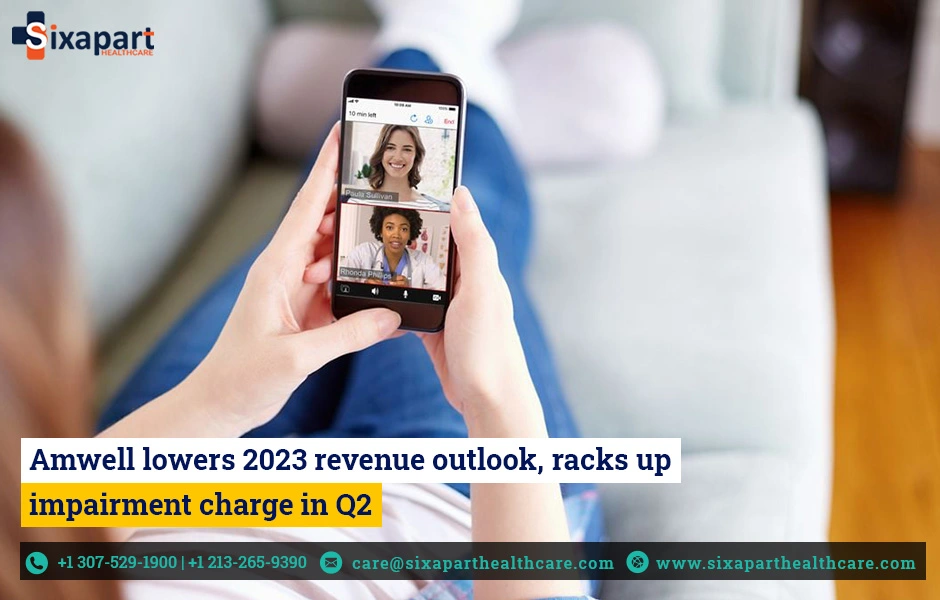Amwell lowers 2023 revenue outlook, racks up impairment charge in Q2
The telehealth company’s results are being impacted by churn on Amwell’s legacy platform as it migrates customers to its Converge software, CFO Robert Shepardson said.
Article By: Emily Olsen
Blog Source From : https://www.healthcaredive.com/

Dive Brief:
- Telehealth company Amwell lowered its 2023 revenue outlook after missing analyst expectations and racking up another non-cash goodwill impairment charge in the second quarter.
- The company now expects to bring in revenue between $257 million and $263 million for the year, compared with earlier guidance of $275 million to $285 million, Amwell said in second-quarter results released Wednesday.
- Amwell’s revenue declined 3% year over year to $62.4 million in the quarter. The telehealth vendor posted a net loss of $93.5 million, which included a $27.3 million goodwill impairment charge to make up for the “sustained decrease” in Amwell’s stock and market capitalization, according to an SEC filing.
Dive Insight:
Amwell’s goodwill impairment charges now total almost $358 million million through the first half of the year. The company posted a nearly $400 million net loss in the first quarter driven by a hefty impairment charge stemming from mounting stock losses.
Amwell is in the midst of migrating its clients to its Converge software, a newer telehealth platform that aims to consolidate its offerings as well as integrate third-party tools.
Amwell recorded about 1.5 million visits in the second quarter. About 43% of those visits took place on Converge in the second quarter, up from 36% in the first quarter, Amwell said.
Executives said they expect the vast majority of health provider clients migrated by the end of this year, and that payer migrations have begun as well. Together, that should help drive more than 50% of total visits to Converge by the end of 2023, CFO Robert Shepardson said during the call.
But healthcare organizations are facing increased financial pressures, and executives are keeping a close eye on spending, according to Schoenberg.
“We are finding this new elevated dialogue can also take additional time in the sales process. And, in some instances, it has influenced the timing of bookings commitments. Because of this, our booking performance in H1 was somewhat muted versus our expectations and will impact our full-year results,” he said.
Research and development costs had previously hampered the telehealth vendor’s earnings, but R&D costs peaked last year, according to management. Amwell reported $25.8 million in R&D costs in the second quarter this year compared with $37.1 million in the prior-year period.
Amwell ended the second quarter with 106,000 active providers, a 5% increase compared with last year but a 2% decline from the first quarter, according to Shepardson.
Visits in the company’s provider practice, Amwell Medical Group, declined 3% in the second quarter, and revenue from AMG visits fell 6%.
Many of the telehealth vendor’s metrics and results are being impacted by customer churn off Amwell’s legacy platform as they transition to Converge, which the company anticipated, Shepardson said.
“In the second half, I think one of the most important things we can do is continue aggressively in migrating the balance of our health system customers and our largest health plan customers as well,” he said.
Amwell is pursuing the right strategy with a more comprehensive platform that offers more than just urgent care, BTIG analyst David Larsen wrote in a note.
But the firm is “negatively surprised at the magnitude of the 2023 revenue guidance revision,” Larsen said.

